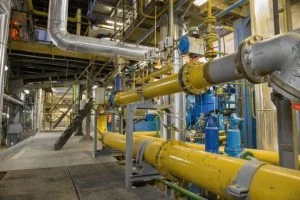
As the saying goes nothing lasts forever. But a good pump that is well maintained can last you a VERY long time. An ANSI pump can be expected to operate for 15-20 years although many last longer than 25 years. We have had Viking Internal Gear pumps in the field for 40 years or more.
However, time and time again we see best practice being ignored which will shorten the lives of pumps considerably. Although that might sound like it is good business for us it really isn’t. It makes our products seem like they can’t last as long as we promise our clients they can.
Here are 6 common causes of reduced pump life.
Pipe Geometry
How the suction side piping is designed will have a huge effect on the life of a pump. For example designing pipes to keep the flow below 10 feet per second on the suction side makes a big difference to pump life.
As will designing your pipes so that fluid is loaded into the pump correctly makes a huge difference to both performance and longevity.
Pipe Strain
Pipe strain is caused when your suction and discharge pipes don’t line up with your pump flanges. It can cause flow problems which leads to vibration, casing distortion and damage to bearings seals and gears.
Driver Misalignment
Not making the effort to precisely line up your pump and motor can overload the pump’s radial bearings. A small misalignment of just 0.060 inches, could see a bearing or coupling issues in as little as three to five months of operation. Compare that to a 0.001 inch of misalignment, the same pump will likely operate for more than 90 months.
Fluid Properties
The Ph, viscosity and specific gravity of the fluid being pumped are all key factors in the life of your pump. Add to this the amount and abrasive qualities of any solids present in the fluid and you have a recipe to shorten your pump life.
Service
If you want your pump to run a long time without trouble, don’t start it and stop it. I’ve heard about pumps that were started and stopped every few seconds. In cases like that you are better off redesigning your system than searching for a pump that can put up with that sort of wear and tear.
Operating Temperature
Make sure your pump is rated to operate at the ambient temperatures it will be operating in. Be sure to winterize and summarize each pump accordingly. More important, however, is the rate of temperature change. Keep the rate of change to less than 2 F per minute. Different materials expand and contract at different rates, which can affect clearances and stresses – which in turn can shorten your pump’s life.
If you are having trouble with a pump that is always breaking down or isn’t lasting as long as you’d expect give the team at Pye-Barker a call on 404-363-6000 or drop us a line sales@pyebarker.com and we’ll help you get to the bottom of your troubles.


